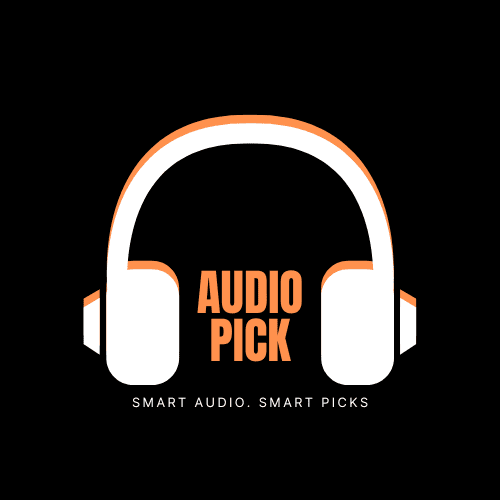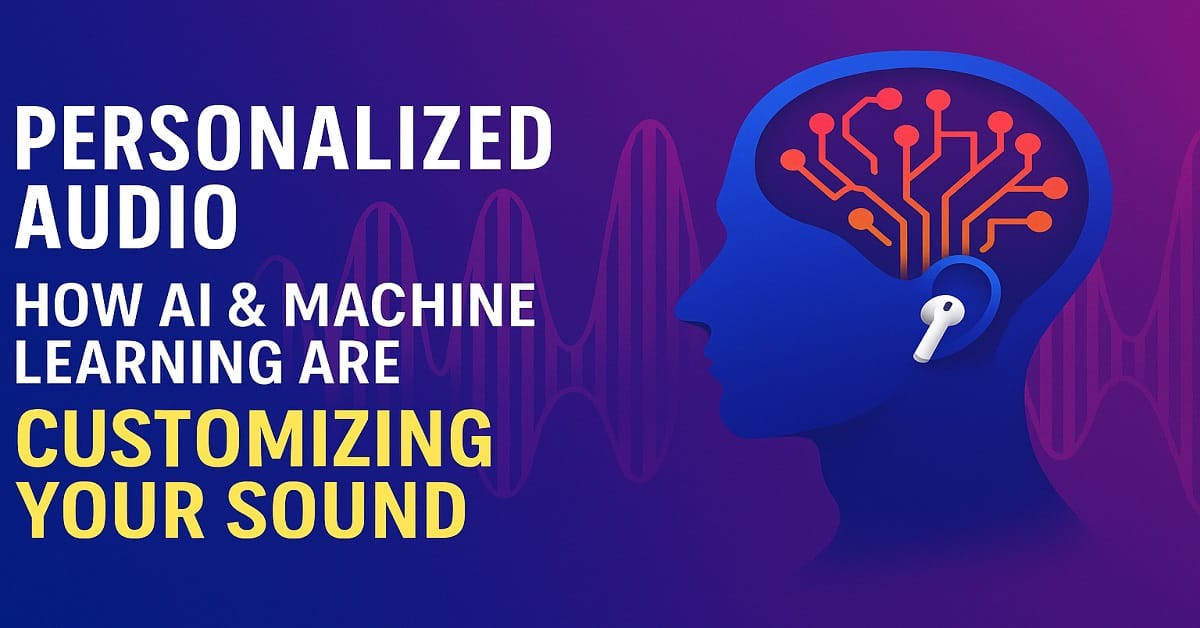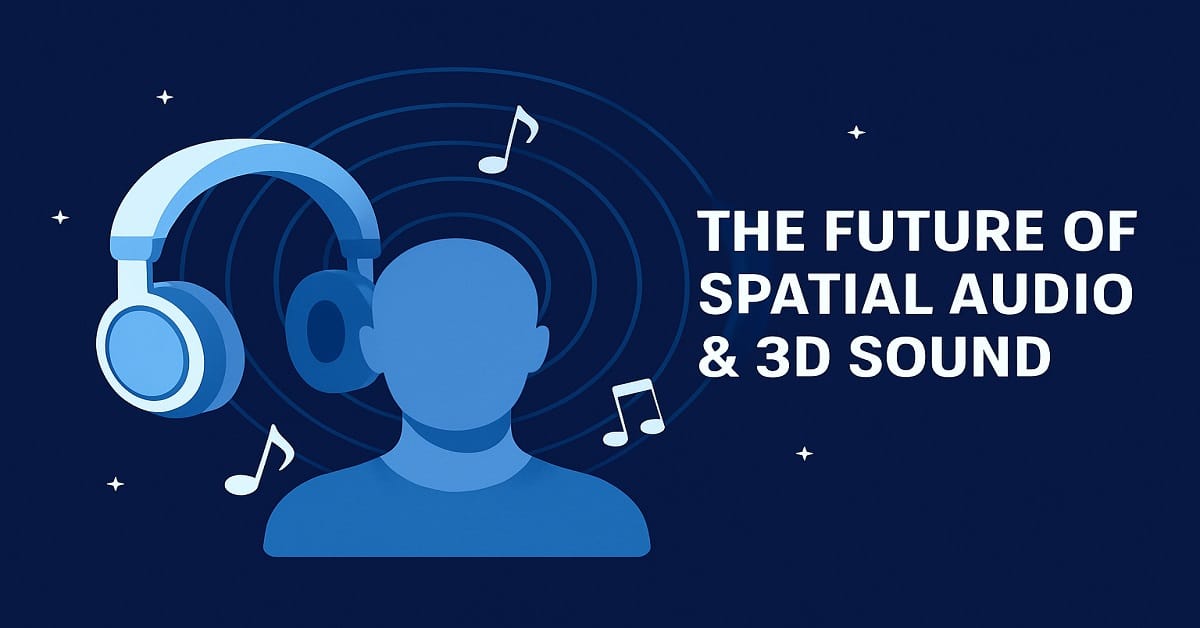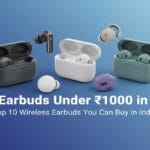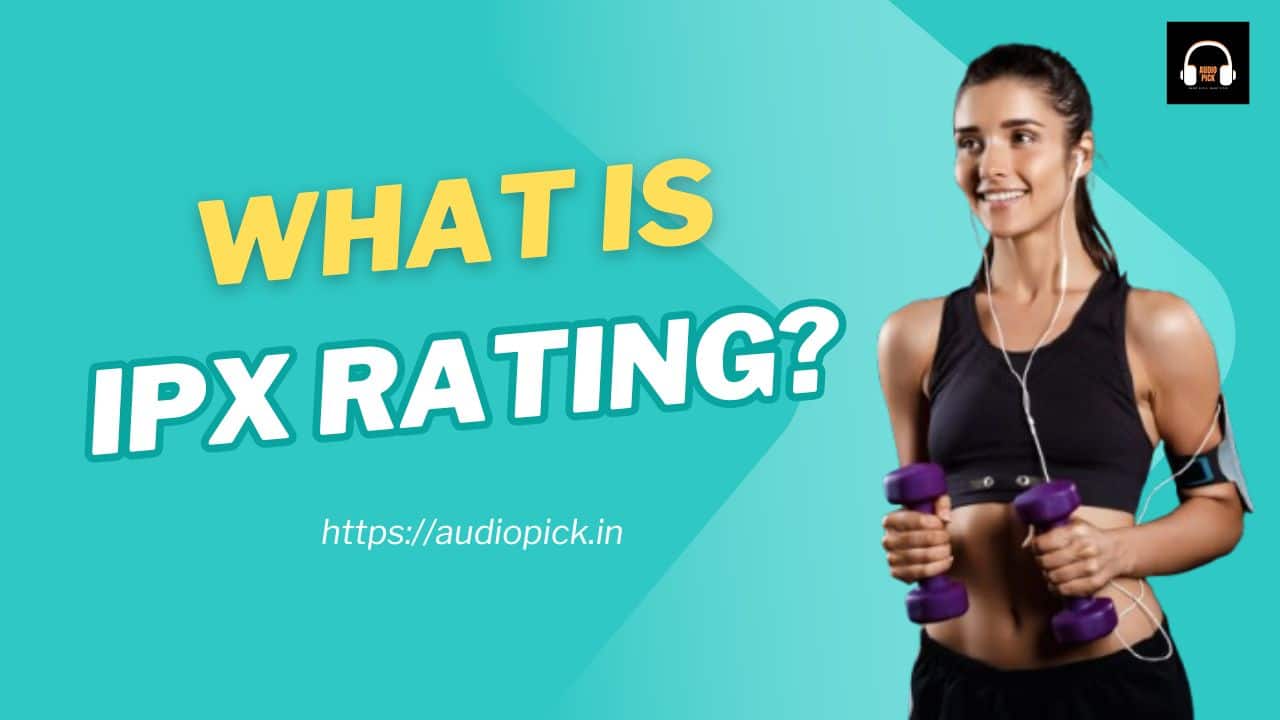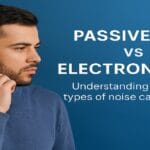You might’ve searched “why do headphones adjust sound for me” or “how does personalized audio work”—you’re not alone.
- You want headphones or earbuds that sound perfect just for you, not like everyone else’s “default” tune.
- Traditional audio gear gives generic bass/treble presets, but your ears, listening environment, and preferences are unique. How do devices actually learn what sounds best for your ears?
- In this guide, we’ll walk you through personalized audio powered by AI & machine learning—what it is, how it functions behind the scenes, its types and tradeoffs, real use cases, comparisons, FAQs, and how you can choose gear that truly adapts to your ears.
By the end, you’ll know why some headphones feel like they were built just for you—and how you can spot good personalized audio in reviews.
What Is Personalized Audio?
Definition / explanation (simple)
Personalized audio refers to systems that adjust sound output to match your unique hearing profile, preferences, environment, or listening behaviors. Instead of you having to manually tweak EQ, the device (or app) learns what frequencies you hear well, which you miss, and compensates automatically.
In layman’s terms: it’s like having a personal audio engineer in your earbuds, tuning music for you, not a generic listener.
Further breakdown
- Everyone’s ears are different: the shape of your ear canal, sensitivity to frequencies, hearing dips or peaks.
- Environments differ: quiet room vs noisy street vs echoey hall.
- Over time, your listening habits (e.g. bass preference, genre, volume) reveal patterns.
Personalized audio combines all this with AI to create a custom sound “map” for you.
Xperi explains that audio personalization lets devices shift settings automatically when you move from office to train or when ambient noise changes.
Sonarworks describes how AI/ML analyze your hearing and behavior to adapt EQ and preferences accordingly.
How It Works
Here’s a step-by-step of how personalized audio systems actually operate, with analogies to help:
- Data Collection & Testing
The system collects data: either via a hearing test (often a sequence of tones you respond to), onboard analytics (tracking which frequencies you adjust), or environmental feedback. - Feature Extraction & Modeling
Using that data, algorithms (machine learning models) calculate key features: hearing thresholds (what frequency you begin to hear), frequency sensitivity, and preferred balance. - Profile Creation / Calibration
The system builds your personal audio profile, often mapping “boost here,” “cut there,” or “flatten this region.” - Real-time Adjustment / Adaptation
As you listen, the system monitors environment (noise, reverb), content (music, voice, movies), and your reactions (if you adjust volume or EQ). It then tweaks the output in real-time to keep your sound balanced. - Feedback Loop & Learning
Over time, the system learns—which adjustments you accept or override—and refines your profile. It becomes more accurate the more you use it.
Analogy:
Imagine Google Maps learning your driving habits: you turn left instead of going straight, it updates suggested route. Similarly, personalized audio “learns” your ear habits and adjusts sound accordingly.
Types / Variations
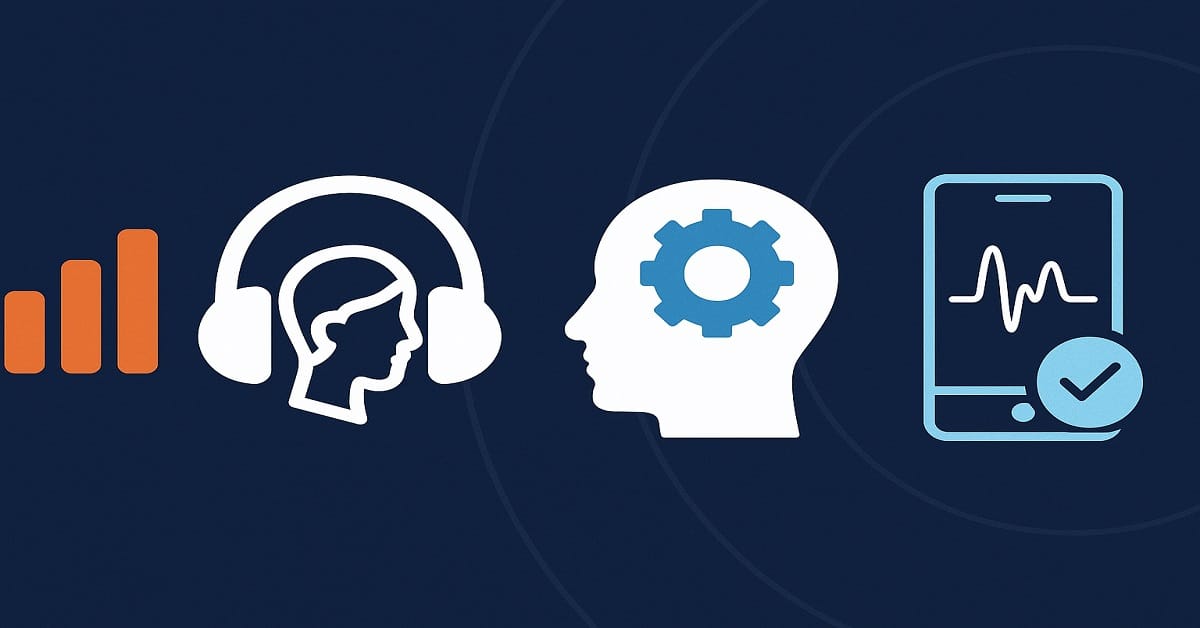
Personalized audio is not one monolithic system. Here are common approaches and variations:
- Hearing-profile-based personalization
You perform a hearing test (tones of various frequencies). The system adjusts output so weaker frequencies are boosted for you. - Behavioral / implicit personalization
No test required. The system watches what EQ settings you choose, what songs you boost bass on, when you reduce treble, etc. It infers your preferences over time. - Adaptive environment-based personalization
The system adapts based on ambient noise or acoustic characteristics of your current location (room reverberation, echo). It blends personalized EQ with environment corrections. - Genre / content-specific personalization
The system changes settings for music vs podcasts vs movies vs games. Because ideal EQ differs by content, it picks a variant suited to what you’re listening to. - Hybrid systems
Combine multiple approaches above (profile + behavior + environment + content) to get a more robust result.
Advantages & Limitations
Advantages
- Better listening experience for each user
You hear details you might otherwise miss. The sound feels “right” for your ears. - Reduced manual tweaking
No more messing with bass/treble sliders every time you switch tracks or devices. - Adaptation to changing environments
As your surroundings change, the system keeps your sound consistent. - Long-term improvement as it learns you
The more you use it, the better it becomes—not static. - Compensates for hearing loss / idiosyncrasies
For those with minor hearing dips, personalized audio can boost troublesome frequencies subtly.
Limitations & Challenges
- Privacy & data concerns
Personal hearing profiles are sensitive data. How the system stores or transmits your data matters (on-device vs cloud). - Model errors / overfitting mistakes
Algorithms may misinterpret your preference. Over time, they might exaggerate or mis-boost some frequencies, making sound unnatural. - Latency / processing costs
Real-time adjustments require processing. If the hardware is weak or the algorithm is heavy, there may be delays or battery drain. - User resistance / unfamiliarity
Some users may prefer manual control or find auto changes unsettling if they contradict their expectation. - Hardware & software compatibility
You need devices that support the necessary sensors, mapping, and AI processing. Older gear may lack it.
Practical Scenarios & Use Cases
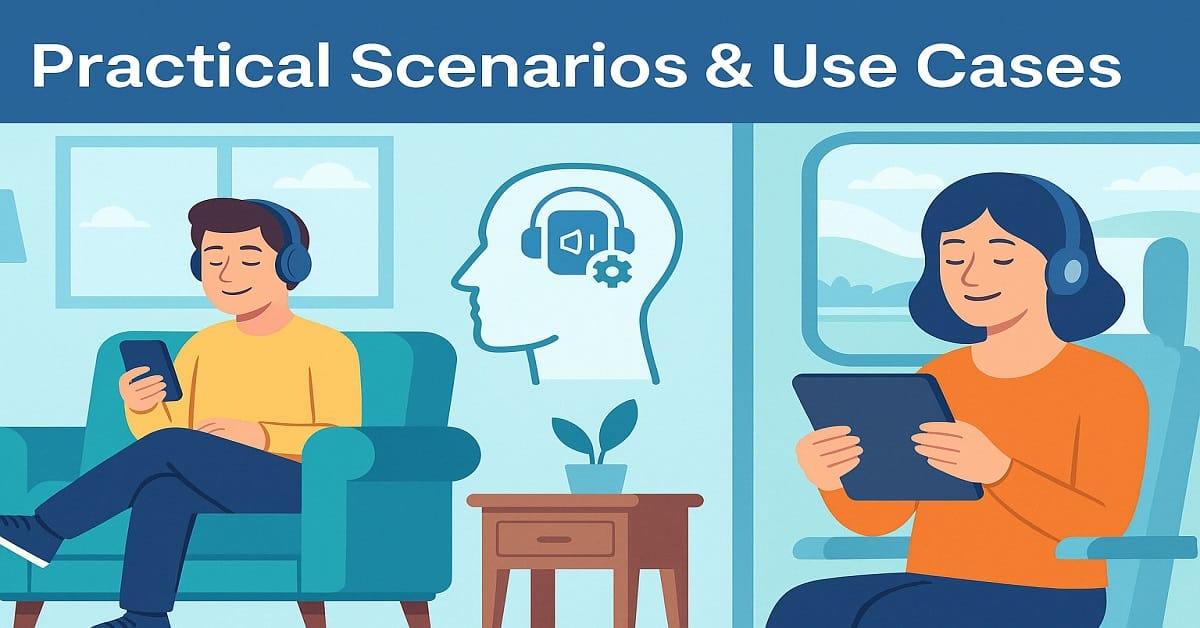
Here are where personalized audio really shines in daily life:
- Switching between noisy and quiet places
You move from a noisy cafe to your quiet room. Personalized audio can adapt EQ so vocals are clearer without booming bass. - Hearing compensation
If your left ear is less sensitive to treble, the system can adjust balance so sound feels even. - Different content needs
You listen to podcasts, music, and movies. The system automatically tweaks EQ differently for each — e.g. boosting midrange for speech, enhancing spatial cues for movies. - Multiuser devices
Family members share headphones. The system can switch profiles per user, so each hears their version. - Ambient mix + personalization
In AR / smart glasses, your device might layer personalized audio over real-world sound, adjusting for environment and your preference. - Hearing aids and personal care
In hearing devices, AI personalization tailors amplifications for environments, speech clarity, and reduces noise. (ML models in hearing care adjust based on user feedback and environment) - Generative soundscapes / ambient apps
Apps like Endel generate personalized soundscapes that adapt to your time of day, location, heart rate — a form of personalized audio environment.
Comparison with Other Concepts
- Standard EQ / presets vs personalized audio
Presets apply the same curve to everyone. Personalized audio adapts the curve to you—and to changing conditions. - Active noise cancellation vs personalized audio
ANC reduces unwanted sounds; personalized audio tailors the wanted sound. They can work together, but solve different problems. - Spatial audio vs personalized audio
Spatial audio handles directionality, immersion, and spatial cues. Personalized audio handles tonal response, clarity, adaptation. A full flagship device might integrate both.
More from AudioPick
- Neckband One Side Not Working? Here’s What Actually Helped Me Fix It
- 10 Real-World Tips to Improve Sound Quality of Your Neckband
- 7 Real-World Tips to Make Your Neckband Last Longer
- What Is IPX Rating? Best Waterproof Neckbands in 2025 You Should Actually Consider
- Neckband Buying Guide 2025—Just the Way You Like It
FAQs
Q1. Do I need to take a hearing test to get personalized audio?
Not always. Some systems allow you to skip a test and instead “learn over time” by observing your adjustments. But doing a hearing test often gives stronger initial results.
Q2. Will personalized audio drain battery faster?
It can, especially in real-time adaptive systems. But efficient models and hardware offloading mitigate that in well-designed devices.
Q3. Can two people with the same headphones have different sound?
Yes. Their personalized profiles can diverge dramatically, so the same device sounds different for each.
Q4. Is personalized audio safe for people with hearing problems?
Generally yes, but it’s no replacement for medical hearing devices. It may enhance clarity for mild hearing dips, but users with significant hearing loss should also consult hearing professionals.
Q5. Will my profile work on another device?
It depends. Some systems store profile in the cloud and sync across devices; others tie it to hardware, so it may not transfer perfectly.
Q6. Is personalization perfect from day one?
Usually no. It improves as more listening data accumulates. Expect some rough adjustments at first.
Conclusion & Actionable Advice
Summary
Personalized audio powered by AI & machine learning customizes sound uniquely for your hearing, environment, and preferences. It learns, adapts, and refines over time. But it’s not magic—it faces challenges in processing, privacy, hardware, and accuracy.
What you can do today
- Choose devices that support hearing profile testing (e.g. built-in audiometry)
- Enable personalization features and let them “learn” your habits
- Be patient—allow the system time to improve
- Still use manual controls — you don’t have to abandon EQ sliders
- Watch privacy settings — prefer on-device processing when possible
If this guide helped you understand how personalized audio works, share it with a friend or family member who’s always tweaking EQ settings. A quick share helps them pick better headphones and apps, and it supports us in creating more simple, useful explainers for everyday listeners.

About the Author
Hari Prasad is the editor of AudioPick.in and a lifelong audio enthusiast. He writes detailed, honest reviews and guides to help everyday users pick the right gear without tech jargon. His personal interest in Bluetooth audio, neckbands, and codecs comes from testing dozens of devices over the past few years.
